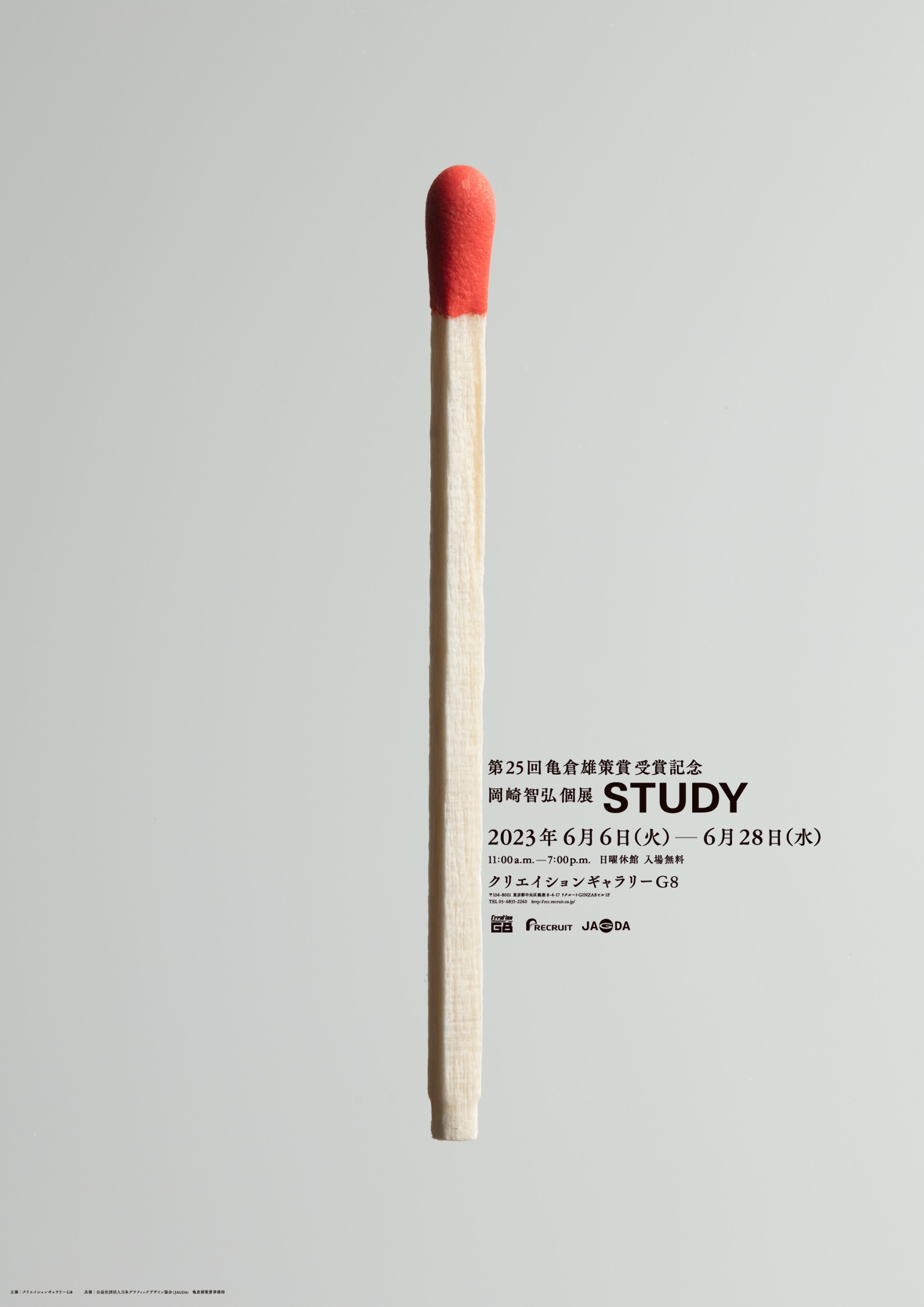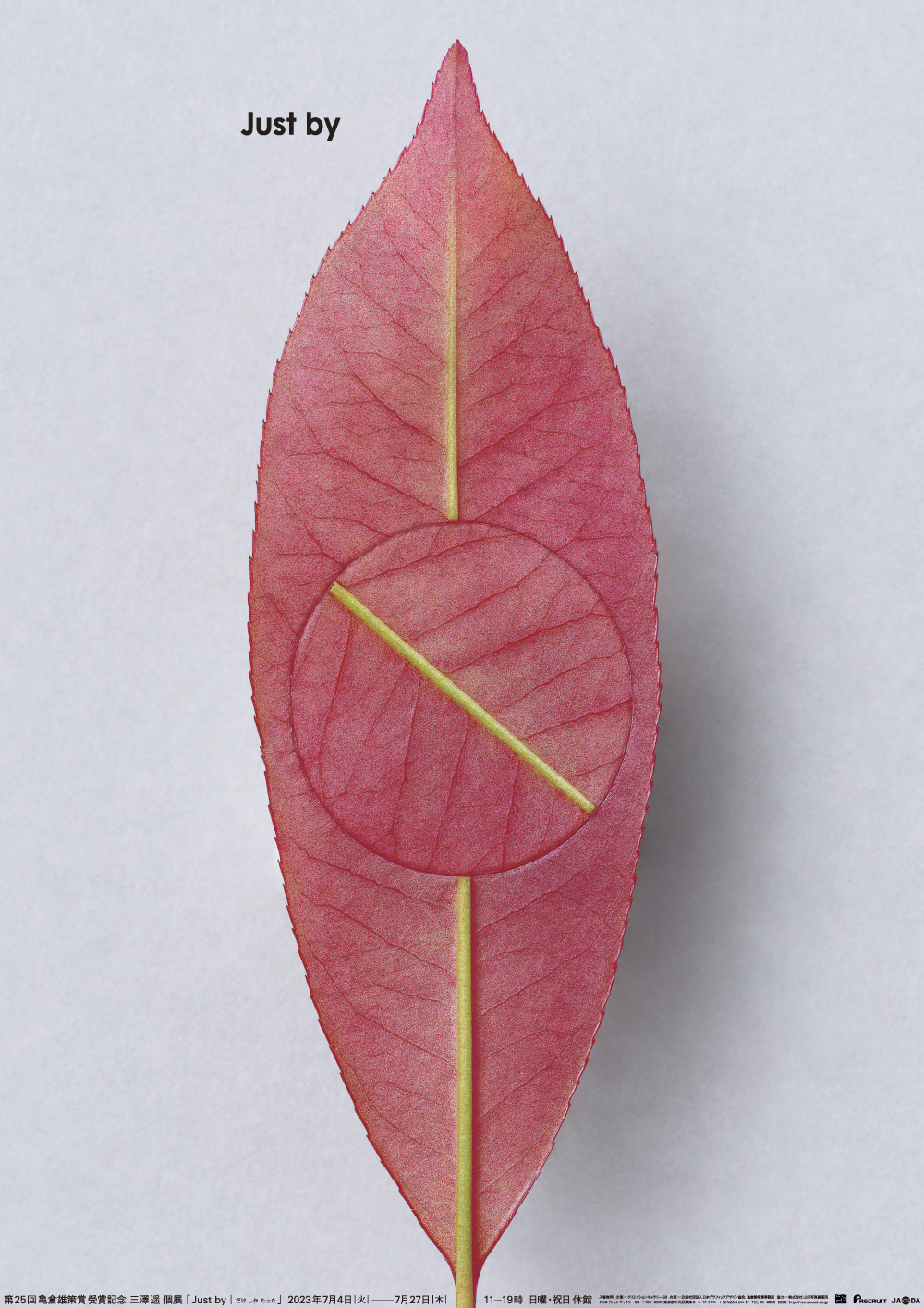Selection Process of the 25th Yusaku Kamekura Design Awards
Awarded Works and Winners
Video of program contents for broadcasting company (cl: NHK) by OKAZAKI Tomohiro
Signage planning for a kindergarten (cl: Tamatsukuri Kindergarten / JAKUETS) by MISAWA Haruka
Publication
“Graphic Design in Japan 2023” (July 2023)
Award Ceremony
JAGDA General Assembly on 16 June 2023 in Tokyo
Exhibition
Tokyo | Tuesday 12 – Wednesday 28 June 2023 | Tomohiro Okazaki “STUDY” | Creation Gallery G8
Tokyo | Tuesday 4 – Thursday 27 July 2023 | Haruka Misawa “Just by” | Creation Gallery G8
Niigata | Monday 9 – Sunday 22 October 2023 | Gallery, The Niigata Prefectural Museum of Modern Art
Selection Process of the 25th Yusaku Kamekura Design Awards
The Yusaku Kamekura Design Award was established in 1999 to commemorate the achievements of Yusaku Kamekura (1915–1997), JAGDA’s first president, and to contribute to the ongoing development of graphic design. The award was made possible through a generous donation from Mr. Kamekura’s family. It is presented each year to the work judged most outstanding among all entries in the JAGDA Annual, regardless of category.
Preliminary nominations for the 2023 award were made in November and December 2022 by the 29 members of the JAGDA Annual Screening Committee. Their selections were made from among the 2,106 works entered in the competition to be included in the 2023 edition of the JAGDA Annual: Graphic Design in Japan. To begin, from among all works nominated for JAGDA Awards in their respective categories, the committee extracted 85 entries garnering the highest numbers of votes. Excluded at this time were 44 works by 12 designers who had previously received the award (Katsumi Asaba, Kenya Hara, Kazunari Hattori, Yoshiaki Irobe, Kaoru Kasai, Atsuki Kikuchi, Kazumasa Nagai, Norio Nakamura, Takuya Onuki, Taku Satoh, Katsuhiko Shibuya, and Ryoji Tanaka). The committee members next voted for the work or series of works they felt deserving of the Yusaku Kamekura Design Award, with each member having a total of 5 votes. All eligible works were displayed anonymously, and committee members were barred from voting for their own works. This stage of the selection process resulted in a list of 22 multiple-vote receiving works by 16 individual designers and 1 group (with 4 entrants receiving votes for multiple works).
The final award selection was conducted on December 20, 2022 by the 10 members of the Yusaku Kamekura Design Award Selection Committee. In compliance with the rule that limits 1 nominated work per designer or team of designers, candidates having multiple preliminary nominations were ultimately nominated for the work selected by majority vote by the Selection Committee. This reduced the number of final nominations to 17.
In the next phase, the 10 members of the Selection Committee voted on the 17 nominations, with each judge permitted to cast up to 3 votes. This resulted in 1 work receiving 7 votes, 1 receiving 6 votes, 2 each receiving 3 votes, and 4 each receiving 2 votes. The committee members then entered into discussions in which they each explained what they admired about the specific works they favored. The list of finalists was then compiled from the 4 works that had received 3 or more votes each, plus 2 works that had emerged strongly during the course of the committee members’ discussions. In this way, the final nominations were pared down to works by 6 designers: Noriaki Hayashi, Haruka Misawa, Kazufumi Nagai, Tomohiro Okazaki, Akiko Sekimoto, and Yui Takada.
Votes, 1 per committee member, were then cast for the 6 finalists’ works, but as no work garnered a majority, a final round of voting took place between the 2 works that had received the most votes: those by Okazaki and Misawa. This round resulted in a tie, however, with each work receiving 5 votes. The committee members then entered into further discussions, where it was agreed that both works were outstanding and merited winning the award. As a result, for the first time in its history, the Yusaku Kamekura Design Award of 2023 was simultaneously bestowed on 2 works.
The winning work by Tomohiro Okazaki is a video of program contents for a broadcasting company created solely from white paper and the Japanese letter あ (a). It received acclaim from the judges for its profound pursuit of stop-motion animation, a commonly used method, and its resulting achievement of unparalleled brilliance; for its suggested sense of the point of origin of graphic design, where the creator seeks to convey an image by visual experience; and for its cutting-edge expression within a popular medium.
The winning work by Haruka Misawa is signage planning for a kindergarten created from cylindrical forms and an unusual color scheme. One judge praised it for the delicacy present in Misawa’s works of recent years, which have vied for awards at the highest levels. Another admired her work’s outstanding quality even amid her focus on creating signage at low cost, through use of existing building materials and the like. A third judge complimented Misawa for the breadth of her expression, manifested here in her discovery of a new approach to design.
(Text by Yusaku Kamekura Design Award Office)
[Nominated Works]
Koji Iyama: spatial design for masking tape show
Yuri Uenishi: spatial design for exhibition at design facility
Tomohiro Okazaki: video of program contents for broadcasting company
Shogo Kishino: museum signage
Arata Kubota: AR project for music album
Koichi Kosugi: publicity graphics, displays and spatial design for Japanese fan exhibition
Shunta Sakamoto: music performance app
Norito Shinmura / Kosuke Niwano: magazine ads for campground
Akiko Sekimoto: publicity graphics for brand of lemon cake
Yui Takada: publicity graphics, works and spatial design for solo show
Taichi Tamaki: posters promoting university department
Kazufumi Nagai: rebranding logotype for confectionery maker
Hiroaki Nagai: title logos for exhibition at art museum
Toshimi Hayashi: graphics for railway rehabilitation campaign
Noriaki Hayashi: student recruitment posters for educational institution
Kako Fujita: hotel branding
Haruka Misawa: signage planning for a kindergarten




